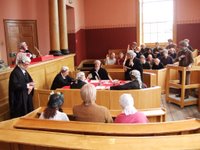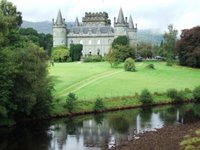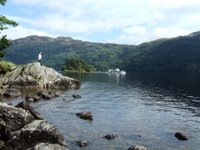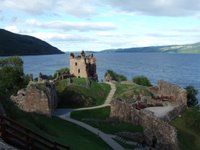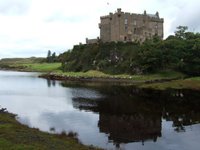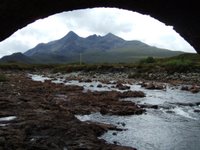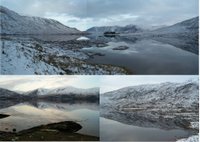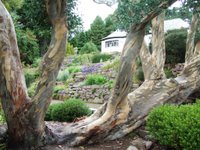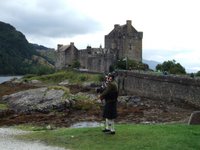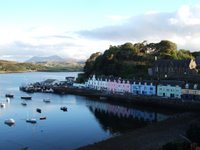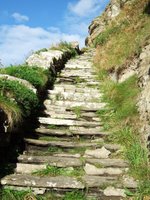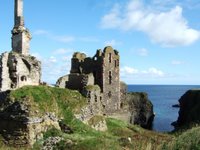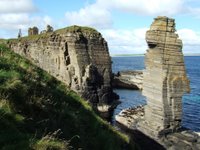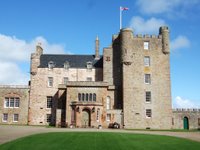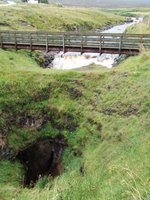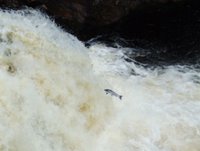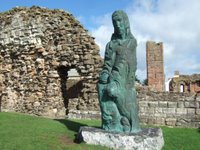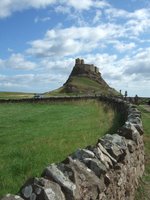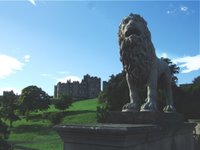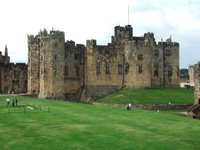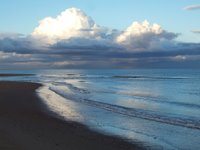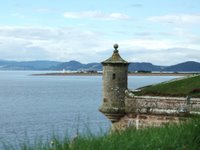 Such as: Fort George. George II had this fort built between 1757 to 1763 as a result of the Battle of Culloden. There were no further highland uprisings, so the fort was never needed, but it has been used as an army camp ever since. We saw groups of soldiers marching in. The whole area is very impressive.
Such as: Fort George. George II had this fort built between 1757 to 1763 as a result of the Battle of Culloden. There were no further highland uprisings, so the fort was never needed, but it has been used as an army camp ever since. We saw groups of soldiers marching in. The whole area is very impressive. And: Cawdor Castle (of MacBeth fame). This, another Campbell Castle, is homely and functional inside and very picturesque on the outside with beautiful gardens.
And: Cawdor Castle (of MacBeth fame). This, another Campbell Castle, is homely and functional inside and very picturesque on the outside with beautiful gardens.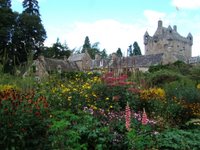
And: Dallas Dhu whisky distillery to experience a very major part of the local history: distilleries are very plentiful in the area.
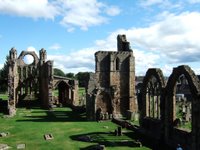 And: Elgin to see their ruined cathedral. Next door to the cathedral ruins is a Biblical Garden that supposedly has at least one of every plant mentioned in the Bible: the first plant we noticed was NZ flax.
And: Elgin to see their ruined cathedral. Next door to the cathedral ruins is a Biblical Garden that supposedly has at least one of every plant mentioned in the Bible: the first plant we noticed was NZ flax.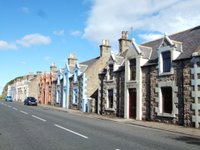 We continued on the coastal trail, through many very picturesque villages: Buckie, Portessie, Findochty, Portknockie, Portsoy and so on as far as Fraserburgh. The cutest village by far was Covie: a handful of fishermen’s cottages huddled on an impossibly narrow strip of land between the cliff and the sea.
We continued on the coastal trail, through many very picturesque villages: Buckie, Portessie, Findochty, Portknockie, Portsoy and so on as far as Fraserburgh. The cutest village by far was Covie: a handful of fishermen’s cottages huddled on an impossibly narrow strip of land between the cliff and the sea.  Nowadays the houses are holiday homes but there is still no vehicular access past the first cottage.
Nowadays the houses are holiday homes but there is still no vehicular access past the first cottage.With so much to see, the daylight was nearly gone when we reached Fraserburgh so we took the fast road to Aberdeen.

